14 Top-Rated Mexico City Must See Places

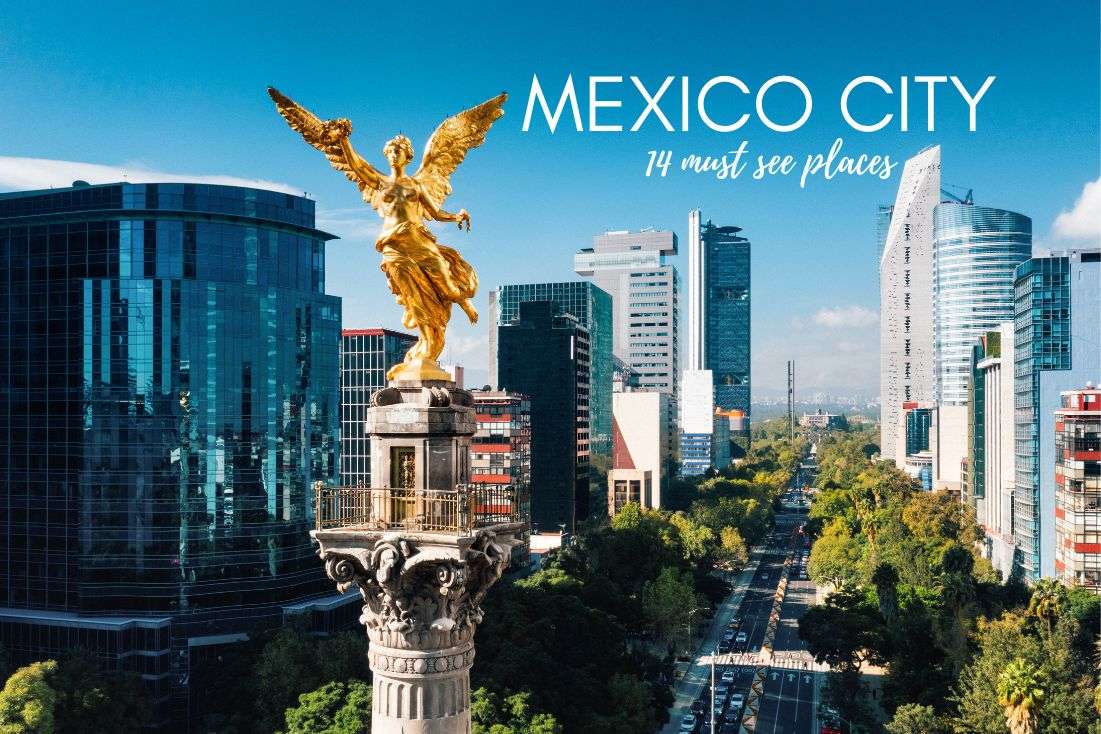
Mexico City is a crossroads of culture, nature, business, and history. It’s home to almost 9 million inhabitants and has more than 1,400 interesting buildings to see. Don’t get lost in all the maps, websites, and tourist guides. Instead, dig into this article and find out the truly best things to do in Mexico City. We are Jan and Karin and we have tried and tested all the places ourselves.
You might also be interested in reading:
- Yucatán Itinerary—2 Weeks Full of the Best Places to Visit
- Safety in Mexico—Is It Safe to Travel There?
- The Best Food in Mexico: 11 Things You Should Try + 3 You Shouldn’t
- 7 Best Aztec Ruins in Mexico
- 33 Mexico Travel Tips from Our Own Experience
1. Monarch Butterfly Biosphere Reserve (trip from Mexico City)
Monarch Butterfly Reserve is home to a jaw-dropping amount of butterflies that fly into Mexico from the north. Hundreds of millions of butterflies stay in the reserve from December to March every year. They fly around, sit on people, and pose for pictures.

This is the Monarch Butterfly
It's easy to get lost in the romance of fluttering wings, but don’t get carried away too quickly—the butterflies basically come into Mexico to copulate and die. You will see unpleasant things. I don’t mean copulating butterflies, I mean dead butterflies—all over the ground.
But nevertheless, the experience is beautiful, and above all absolutely unique. You won’t see this anywhere else in the world. This is your once-in-a-lifetime opportunity, so don’t miss it.
Some really useful information: Approximately a three-hour drive from Mexico City, the walk into the reserve starts in Rosario. Put it in your GPS, keep a close eye on it, and don’t let anyone rip you off. I’d bet my boots that there will be a few cheaters pretending you’re already on the spot and asking you to pay the entrance fee. Well, you should pay the entrance fee. But once you’re really there, not a minute sooner.
The walk is quite short (it takes about an hour) but challenging and steep. It’s invisible on the map, but I have a trick up my sleeve to share with you. Hold the yellow figure in Google Maps for a while—and it will show you the path!
Find the Monarch Butterfly Reserve on Google Maps
Another piece of advice: Be good. I know, I know. I’m not your mother. But this is what I have to say: Some people in Mexico are really poor, and you can help them quite a lot if you purchase something from them. Don’t be a jerk and hire a guide or buy a souvenir. (Or, even better, buy tacos and churritos. You won’t regret it, I promise.)
And one last recommendation: It’s better to visit the reserve on a hot, sunny day. Otherwise, the butterflies will fly higher and it will be harder to see them.
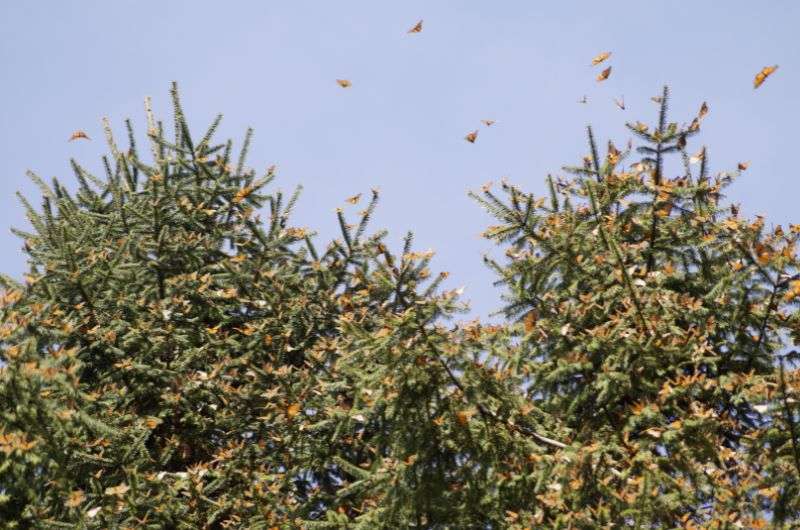
The brown dry leaves on the trees aren’t brown dry leaves. They are butterflies.
2. Izta Popo National Park (trip from Mexico City)
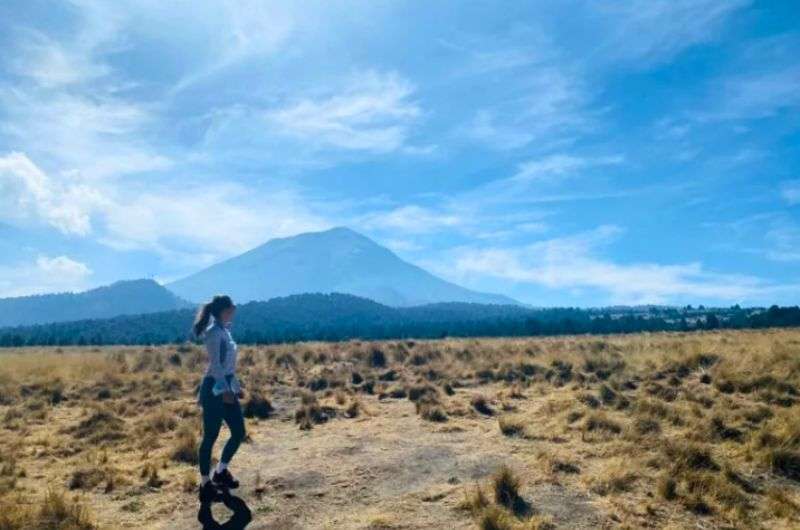
You have to experience the great hiking in the Izta Popo National Park
Izta Popo National Park is an absolute must-see, if only because of the world-famous Popocatépetl.
You could take it easy and just enjoy the views, or conquer the challenge and take a hike. There are plenty of them, the most popular one being Paso de Cortés. It’s named after the destroyer of Mexico’s ancient cultures, the conquistador Hernán Cortés. I guess it was the Spanish who named it, not the Mexicans.
The hike is 12 kilometers (7,4 miles) long and might seem easy. But appearances are deceptive. Because it’s at a high altitude, and in quite cold weather, it’s actually rather grueling.
Popocatépetl is 5,426 meters (17,801 feet) high, and active. If you didn’t know that, it’s probably clear to you by now: Popocatépetl is a volcano. Its name means Smoking Mountain in Aztec, and not without reason:it smokes like a chimney. During the 2000 eruption, it shot lava 400 meters (1,300 feet) in the air. Obviously, you can’t climb it or hike up, as it’s strictly forbidden and immensely dangerous.
Another important mountain of the national park is Iztaccíhuatl, 5,230 meters (17,158 feet) high, often hidden in the shroud of clouds. The park itself is at an altitude of some 2,500 meters (8,200 feet) above sea level, which means one thing: Bring sunscreen.
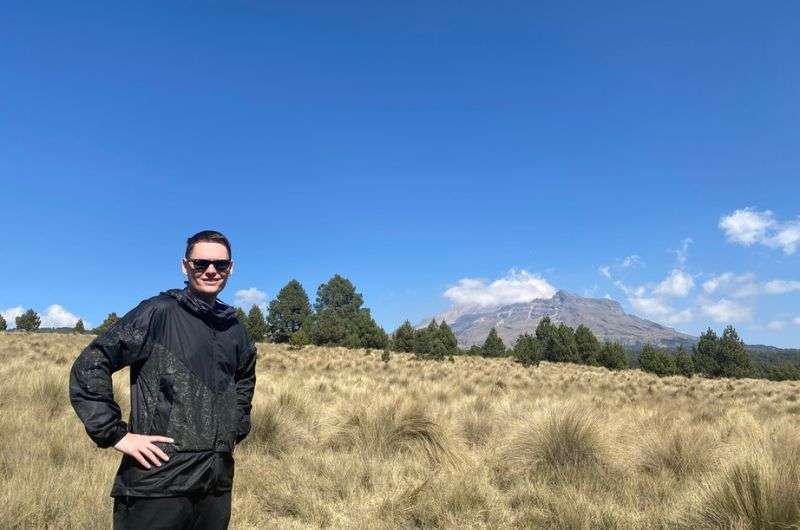
Don't forget your sunscreen!
A winding road leads from Mexico City to Izta Popo, taking you to one of the most crowded parking lots in Mexico. We were there in Covid time. We were there in December. And still, it was almost full. There are lots of parking places, but it’s always better to arrive as early as possible. You know, just for sure.
3. Teotihuacan
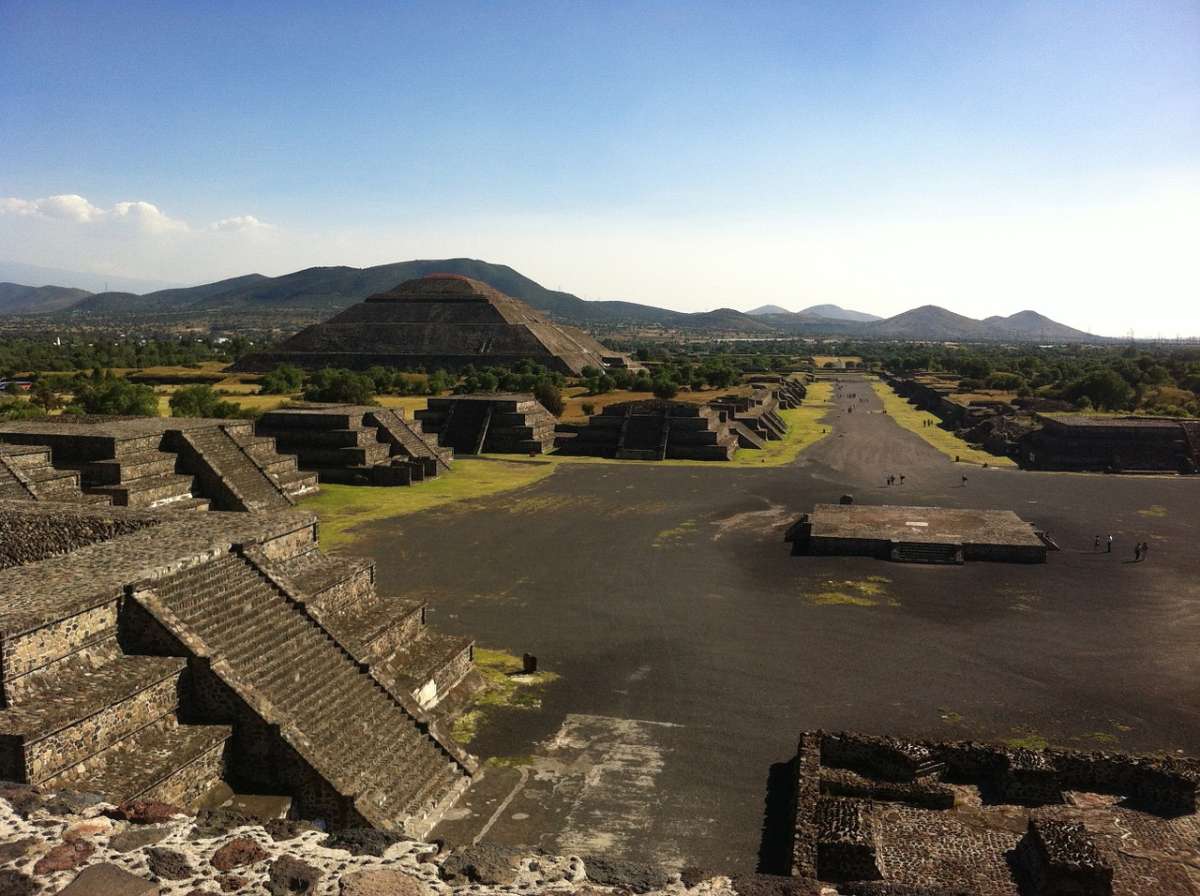
Teotihuacan
Back in the days when Julius Caesar happily walked the Earth, strengthening the relationship with his beloved son, and Cleopatra ruled Egypt, Teotihuacan was the largest city in the Western Hemisphere, and the 6th largest city in the world. It had the same strength as for example Rome or Constantinople. Then it collapsed. Maybe you wonder why it collapsed if it was so great and amazing. And that’s a great question. Unfortunately, nobody knows the answer.
Teotihuacan lies 40 kilometres (25 miles) northeast of modern-day Mexico City, and has been on UNESCO World Heritage List since 1987. Pyramids, temples, the Avenue of the Dead, and other fascinating sites will leave your eyes out on stalks. You might think you would be paying through the nose to see it, but no: the entry costs only the ridiculous sum of 80 Mexican pesos (4 US dollars).
Check out the Complete Guide to Visit Teotihuacan (including prices and photos).
Tip: You can book a hot air balloon flight over the ruins for a little over 2,000 Mexican pesos (100 US dollars). Check for example Civitatis. But remember the price can vary greatly depending on a number of factors so always browse the internet and search for the best offer.
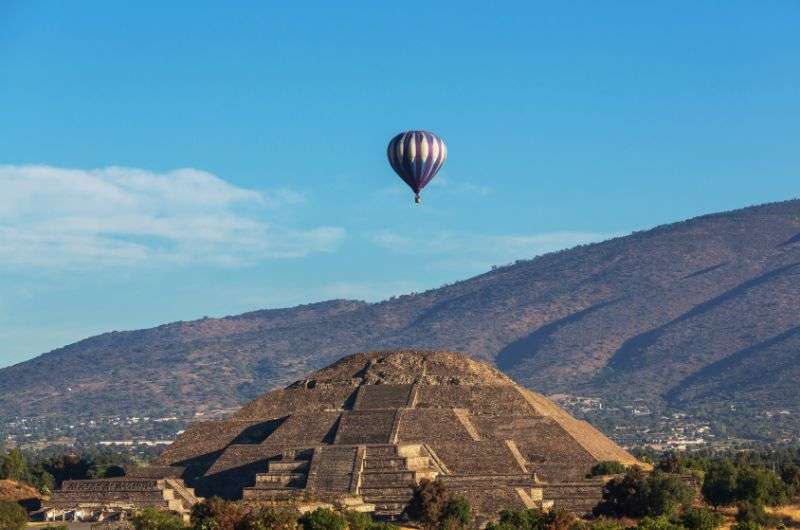
Try a hot air balloon flight above Teotihuacan!
4. Zócalo (Mexico City center)
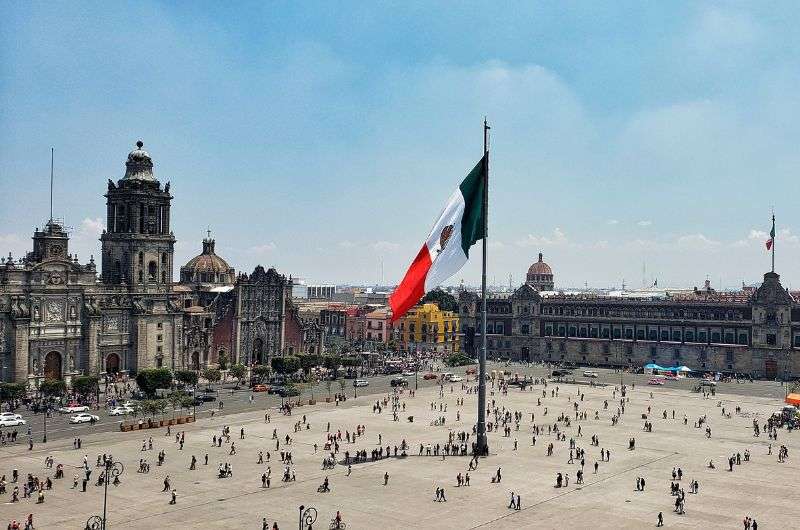
The Zócalo
It's all about history when it comes to exploring foreign cities, towns, and sites. And history is crucial even in Zócalo, the heart of Mexico City. Zócalo has been the center of the realm since the foundation of the Aztec Empire, and is built on the ruins of Tenochtitlan (as is the whole of Mexico City). Now it serves as a gigantic square so big that it could fit 12 football fields in.
5. Frida Kahlo Museum
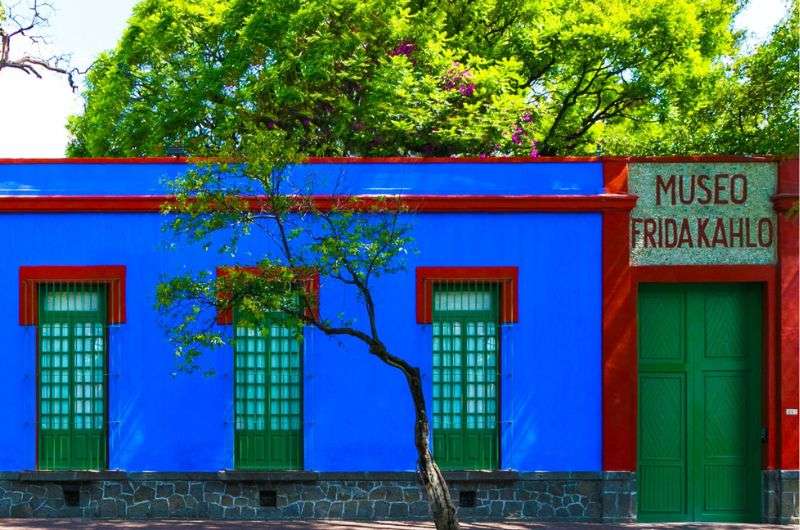
Surrealism had its boom in the 20th century all over the world, but Frida Kahlo took it to a different level in Mexico. She is famous especially for her self-portraits, colorful and fascinatingly confusing.
The museum dedicated to Frida Kahlo in Mexico City reaches the very same level of creativity as her pictures—painted blue inside and out, it’s called La Casa Azul (The Blue House). It’s established in the house where Frida lived and painted (and took care of her eyebrows).[1]
- Opening hours: 10 AM – 5:30 PM, closed on Mondays
- Warning: If you want to take photos inside, you have to buy a special permit.
6. Latin American Tower
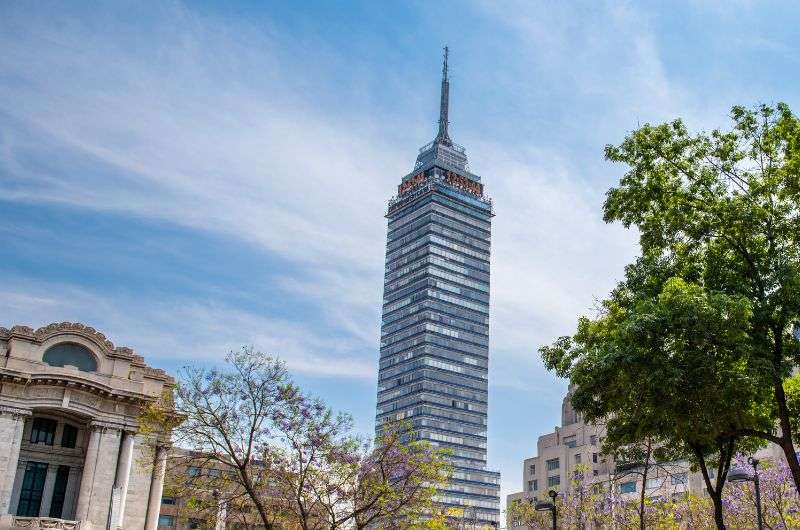
Latin American Tower
Skyscrapers are nothing unusual in American cities. But a skyscraper in the middle of a historical center? That’s a real diamond.
To add on, Torre Latinoamericana (Latin American Tower) has one superpower: it’s earthquake resistant. Its 44 floors and 182 meters (597 feet) are rock-solid and unlikely to fall down even in the most horrible of tremors, shakes, and quakes.
7. The House of Tiles
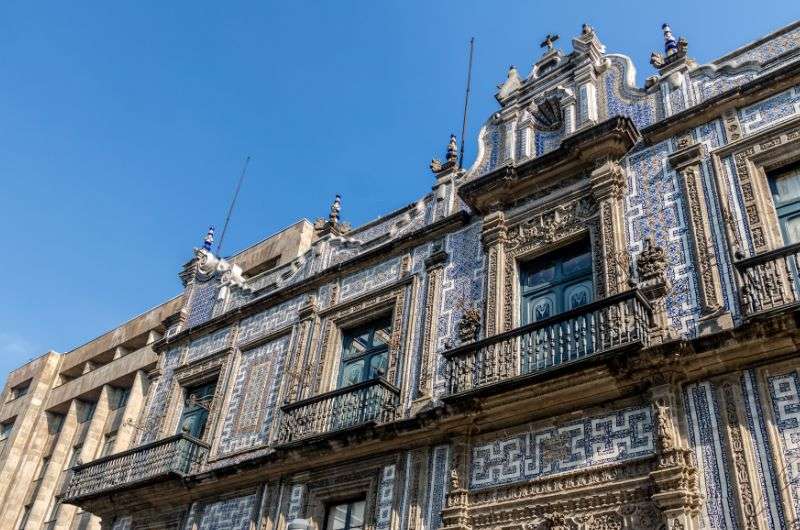
The decoration of House of Tiles
With its facade covered by blue and white tiles, Casa de los Azulejos (The House of Tiles) is rightly one of Mexico City’s most popular places. It’s an 18th-century novo-spanish baroque palace built by the Count of the Valle de Orizaba family.
There are two official explanations of the facade, both of them equally plausible:
- The tiles were supposed to show the family’s wealth.
- A young family member had the tiles put on as an act of defiance. (I wouldn’t complain if my kids had similar acts of defiance, would you?)
The house serves as a restaurant today.
- Opening hours: 7 AM – 12 PM every day
8. Chapultepec Park
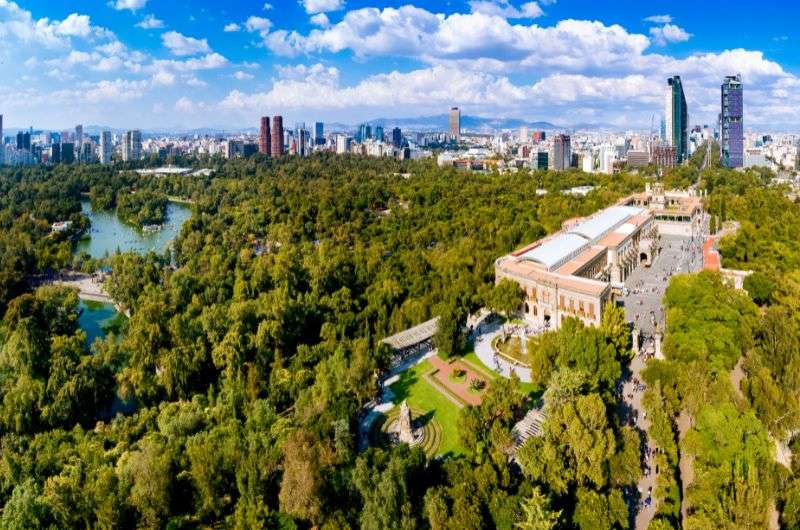
Chapultepec Park is a must!
With its 686 hectares (1,695 acres) of trees, walking paths, and cultural sites, Chapultepec Park is the best pick when you've had enough of the tourist hustle and noise in the city center. It’s often described as the Mexican version of Central Park in New York, Bois de Boulogne in Paris, or the Imperial Gardens in Tokyo—depending on the nationality of the speaker.
The park offers a lot:
- Chapultepec Zoo
- Anthropology Museum
- Rufino Tamayo Museum (contemporary art museum)
- Chapultepec Castle (great for your Instagram pics)
You could spend a whole day in it if you wanted. But on the other hand—if you wanted to spend a whole day in a park, why on Earth would you travel as far as Mexico City?
9. The Desert of Lions
Desierto de los Leones (the Desert of Lions) is not precisely a desert. It didn’t get its name because it’s dry; it got its name because it’s wild. It’s a vast national park with steep mountains (some of them higher than 4,000 meters—13,123 feet), plentiful brooks, ravines and waterfalls, and a cold and damp climate. It contains numerous hike possibilities, but if you don’t have enough time, I recommend visiting at least the abandoned convent that lies in the dense forests of the park. It was built by the order of barefoot Carmelites, and allows a glimpse into their lives.
10. Alameda Central Park
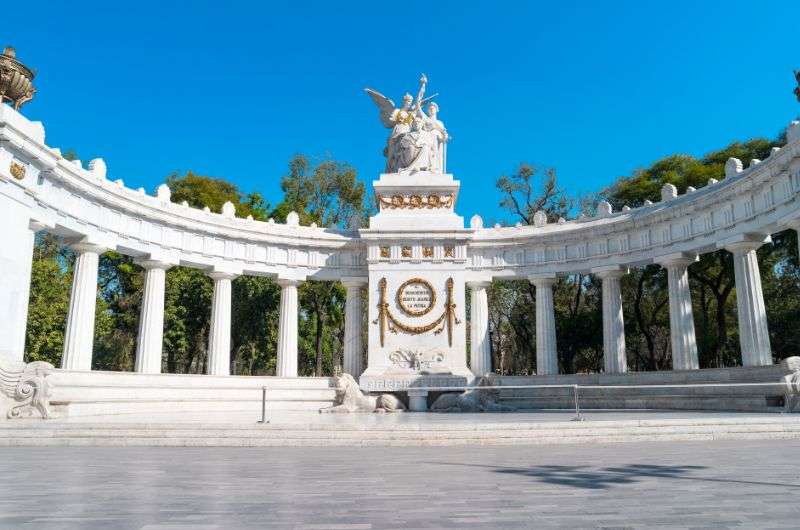
Take a walk through the Alameda Central Park
Yes, I know. Another park. The last one, I promise. Even though Alameda Central Park might not enjoy the same popularity as its bigger equivalents, it also deserves a mention. Its fountains, statues, kiosks, and benches make it just the perfect place for an afternoon chillout.
11. Palacio de Bellas Artes
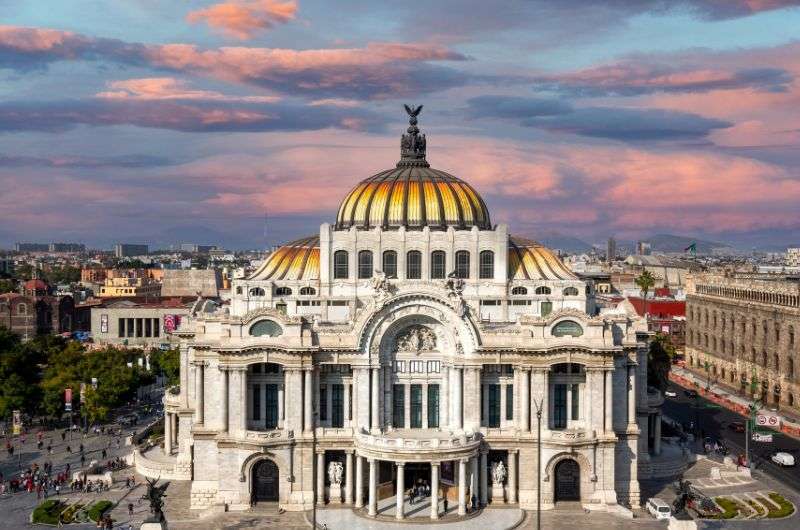
Whether you are an artistic person or not, you will appreciate the Palacio de Bellas Artes
Within a stone’s throw from the park, dozens of tourists admire Palacio de Bellas Artes (Palace of Fine Arts). If you’re into culture, this place is totally for you. And if you’re not into culture but prefer taking awesome Instagram pictures instead, this place is also totally for you. Look at the palace and see for yourself:
12. The Angel of Independence
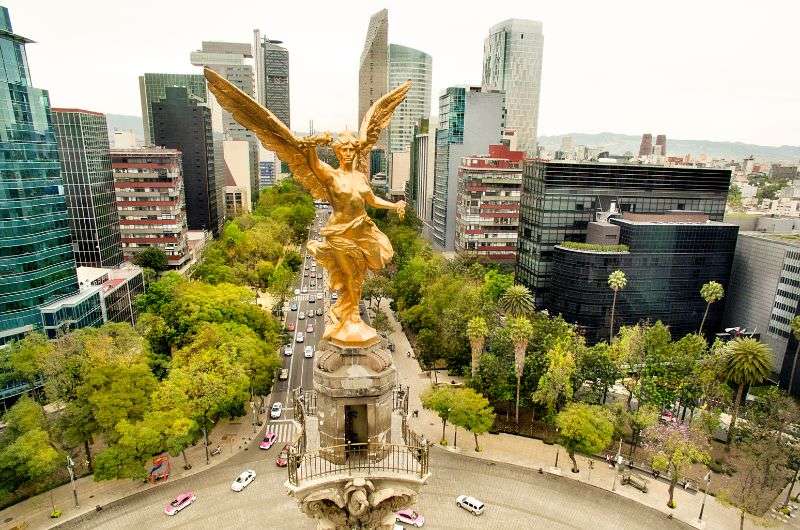
The Angel of Independence—the symbol of Mexico City
What list of must-see city attractions would be complete without an enormous statue in the Statue of Liberty style? The Angel of Independence is 48 meters (157 feet) smaller than its North-American cousin but it doesn’t mean it’s less interesting. Or maybe it does. But you should see it nonetheless.
13. Polanco
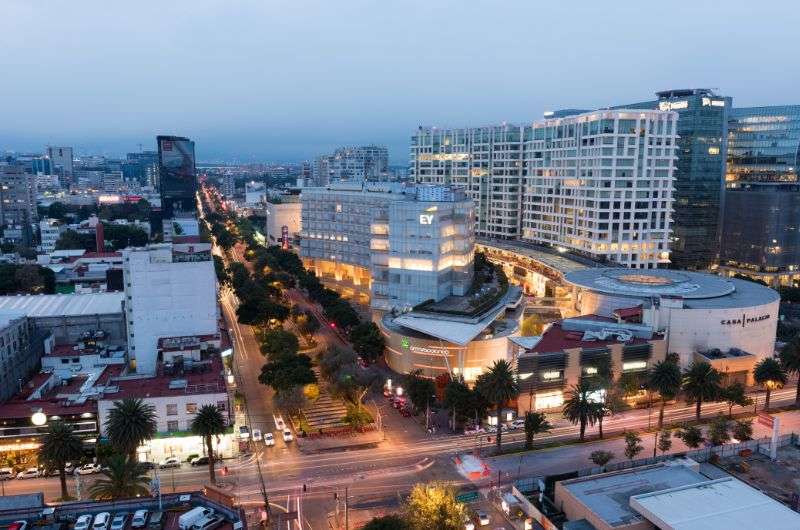
If you want to buy some souvenirs from your trip, this is the place
The Polanco quarter should be on every shopaholic visitor’s list—or at least as long as the visitor is a millionaire. Avenida Presidente Masaryk,the main street of the quarter,is the most expensive street in Mexico, being home to upscale shops such as Rolex, Dolce & Gabbana, or Louis Vuitton. It will be either hell or heaven for you—depending on the state of your wallet.
If you’re not into shopping, Polanco still has plenty of things to offer. You can indulge in the excellent food in several Michelin-starred restaurants, or at least admire local embassies.
Fun fact: Since I’m Czech, I can’t miss this opportunity to tell you that Avenida Presidente Masaryk is named after the first Czechoslovak president, called Father of the Nation—Tomas Garrigue Masaryk. Unfortunately, I seem to be the only one aware—many local shops have it wrong, and display “Mazarik” on their signs.
14. Tepozteco (trip from Mexico City)
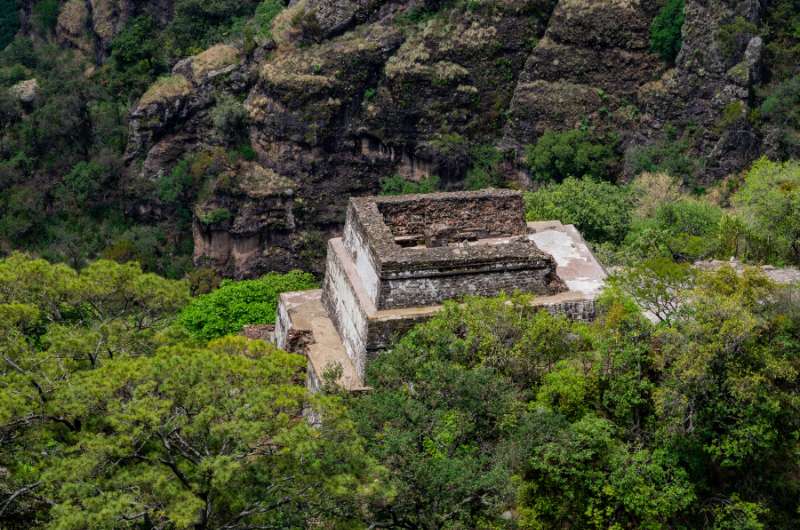
Tepozteco
Breathe an air of ancient cultures and visit Tepozteco, an Aztec temple built on a hill above the town of Tepoztlán. It’s no walk in the park: Get ready to climb a steep slope and scramble over rocks and tree roots that block the path. You will get 300 meters (984 feet) higher in the course of a 1.5 kilometer (0.9 mile) long path.
My tip: Don’t drive right under the hill—the streets there are extremely narrow and strewn with one-ways. You could drive in circles forever. Instead, find a parking space in one of the private gardens that locals offer for parking for 10 pesos (50 US cents).
This post may contain affiliate links. We earn a small commission if you make bookings through my links, at no additional cost to you. This helps us keep this blog free, thank you!


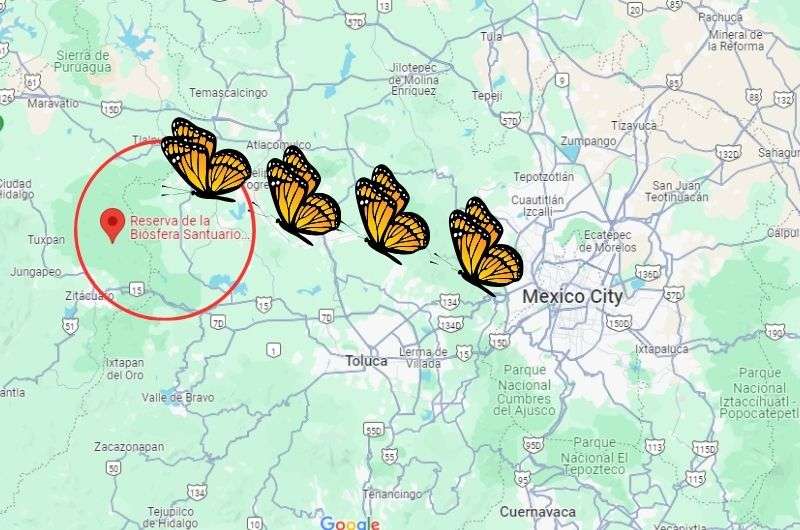
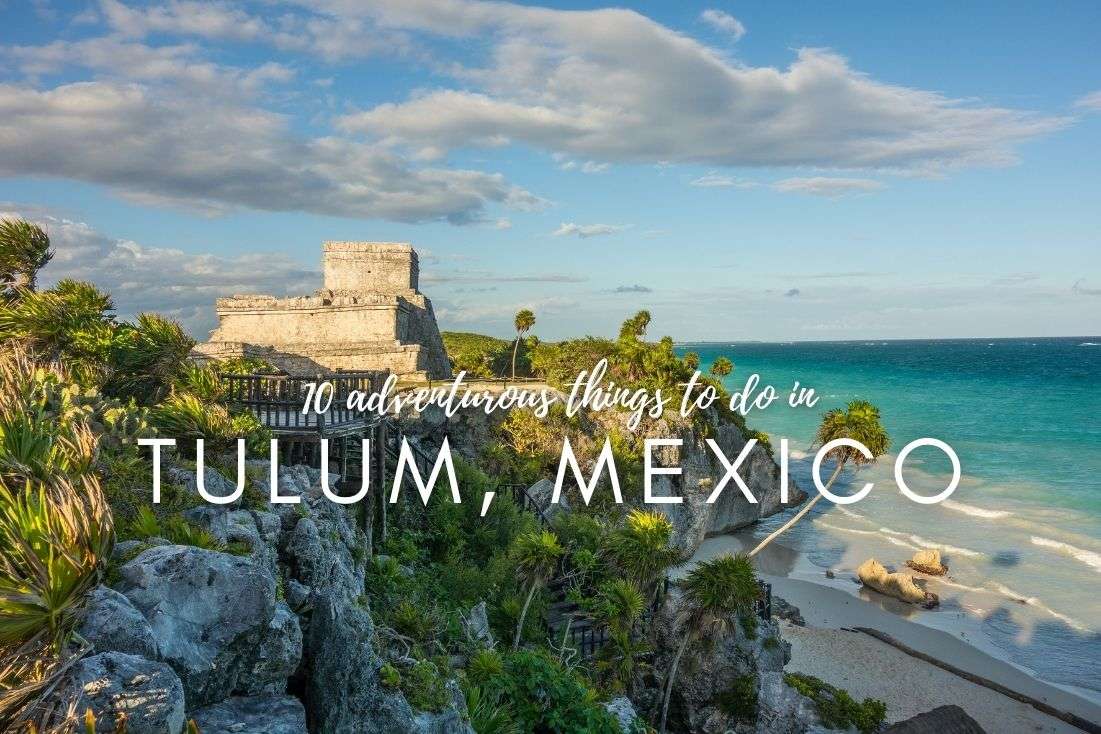
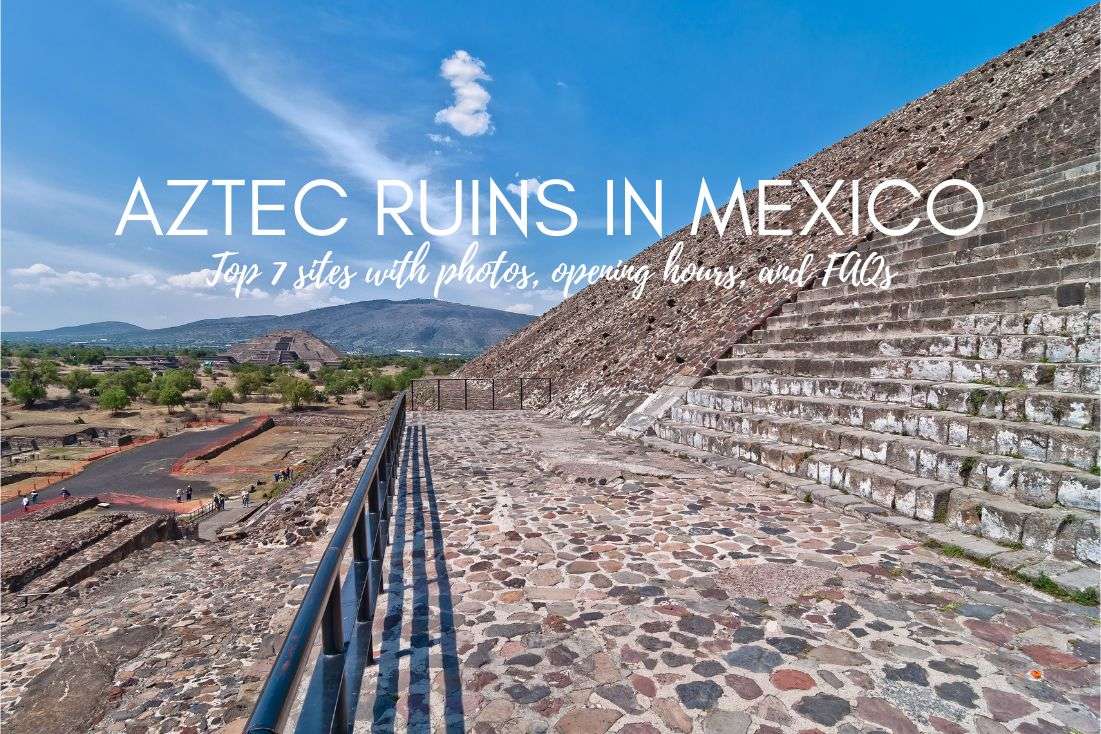






Comments | Thoughts? Give us a shout!